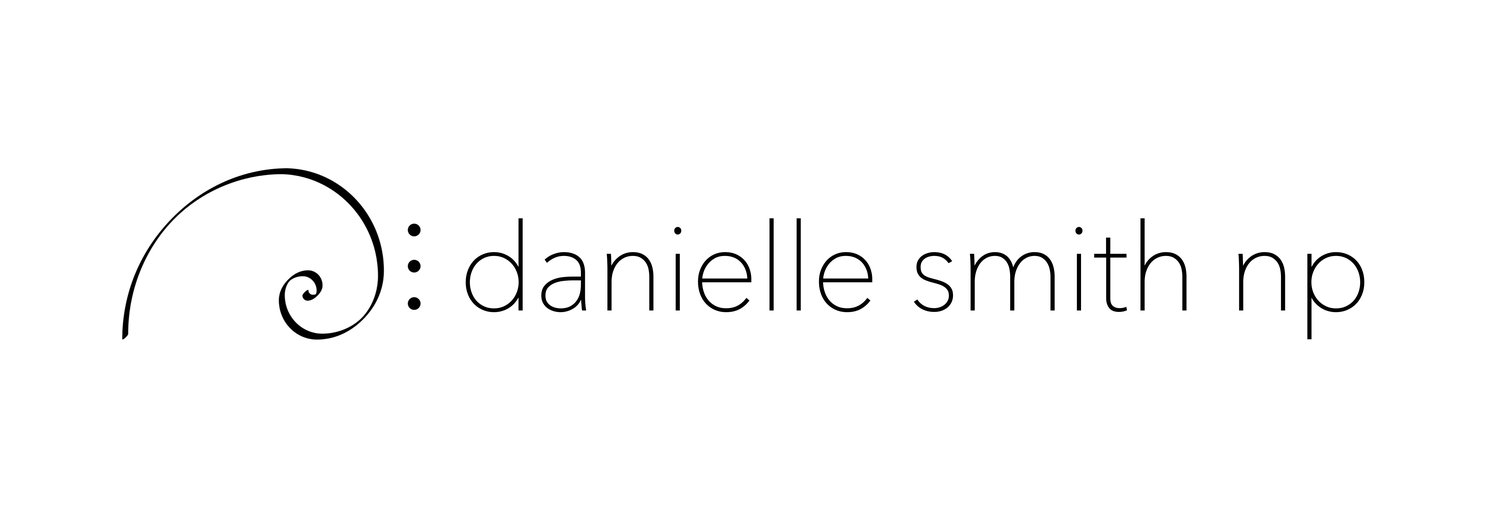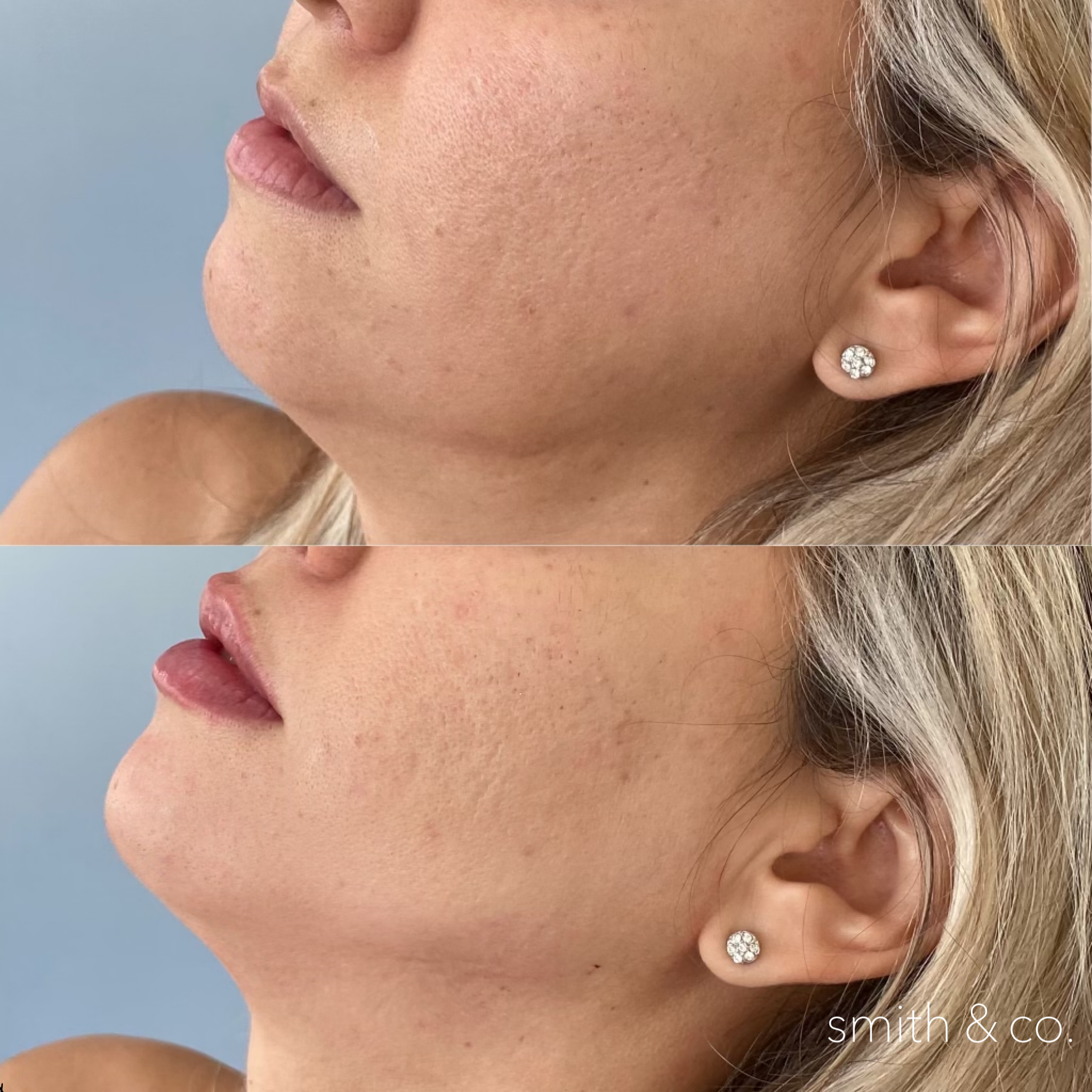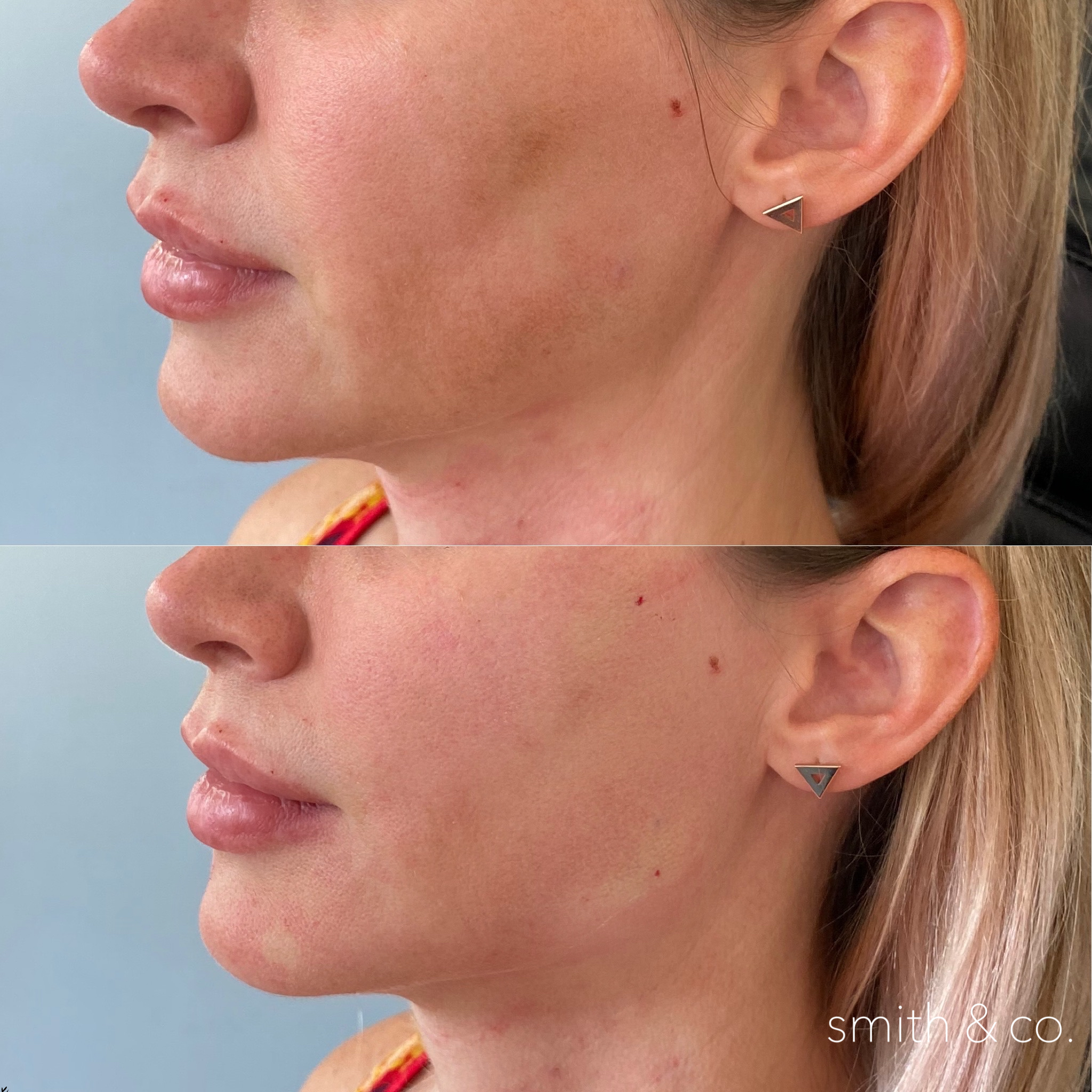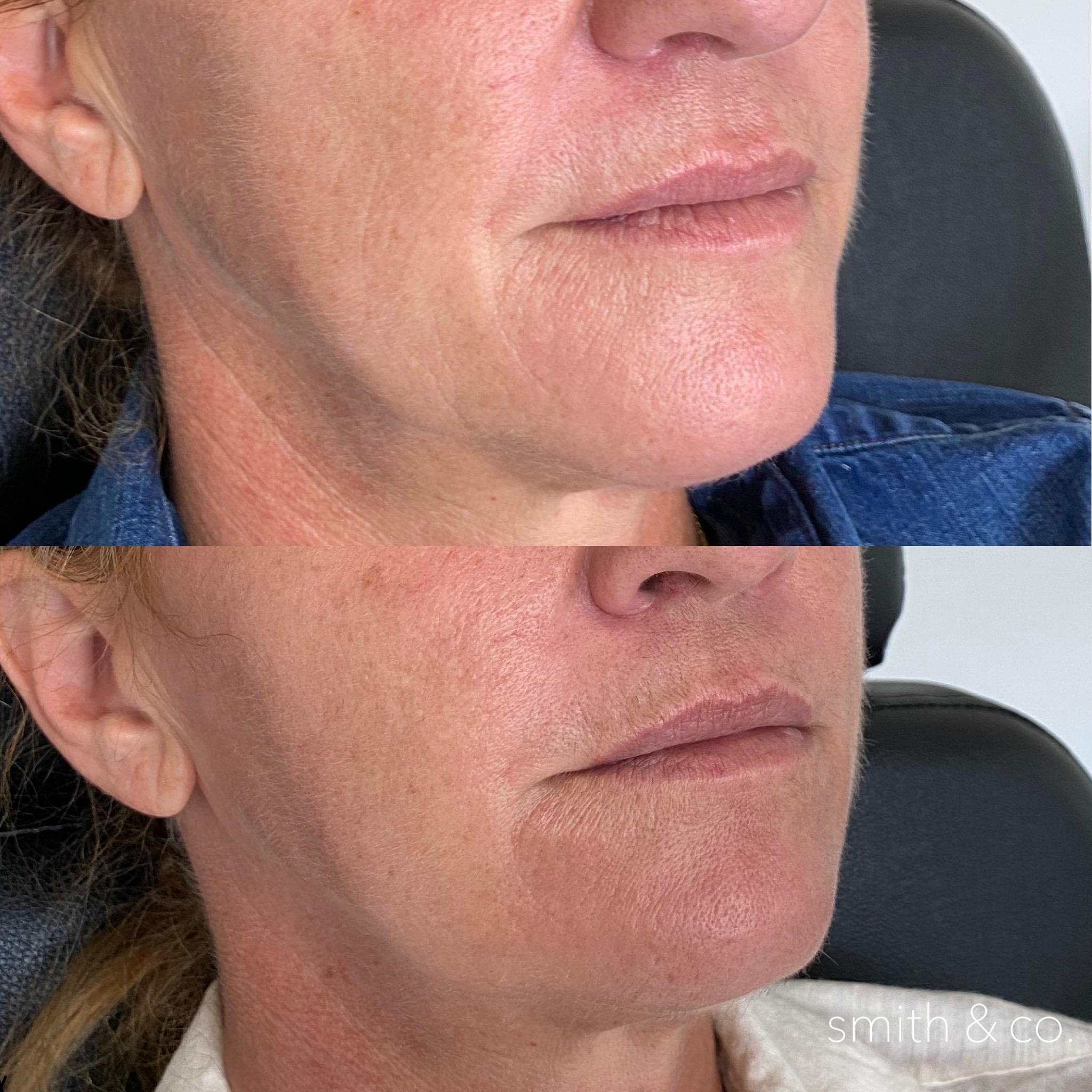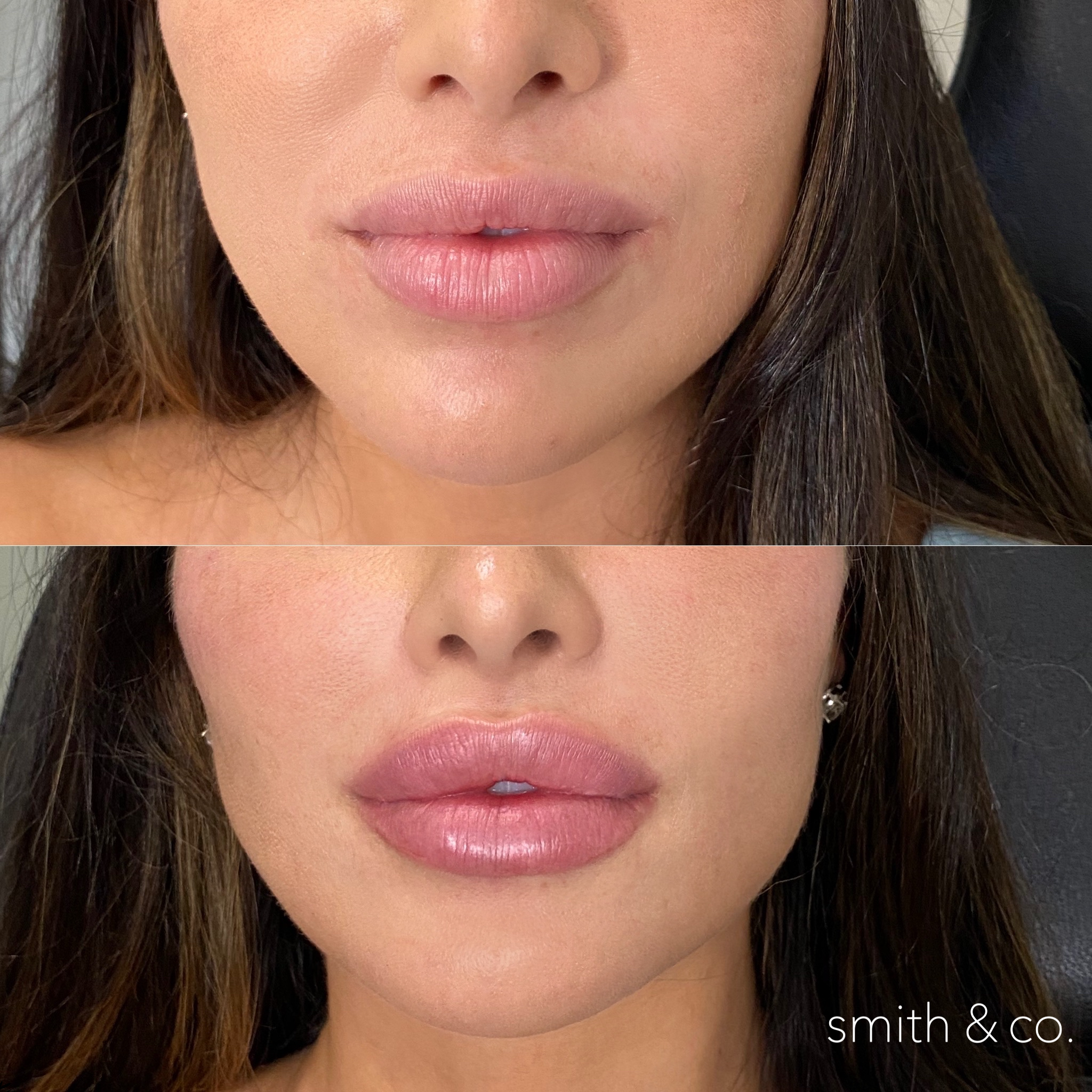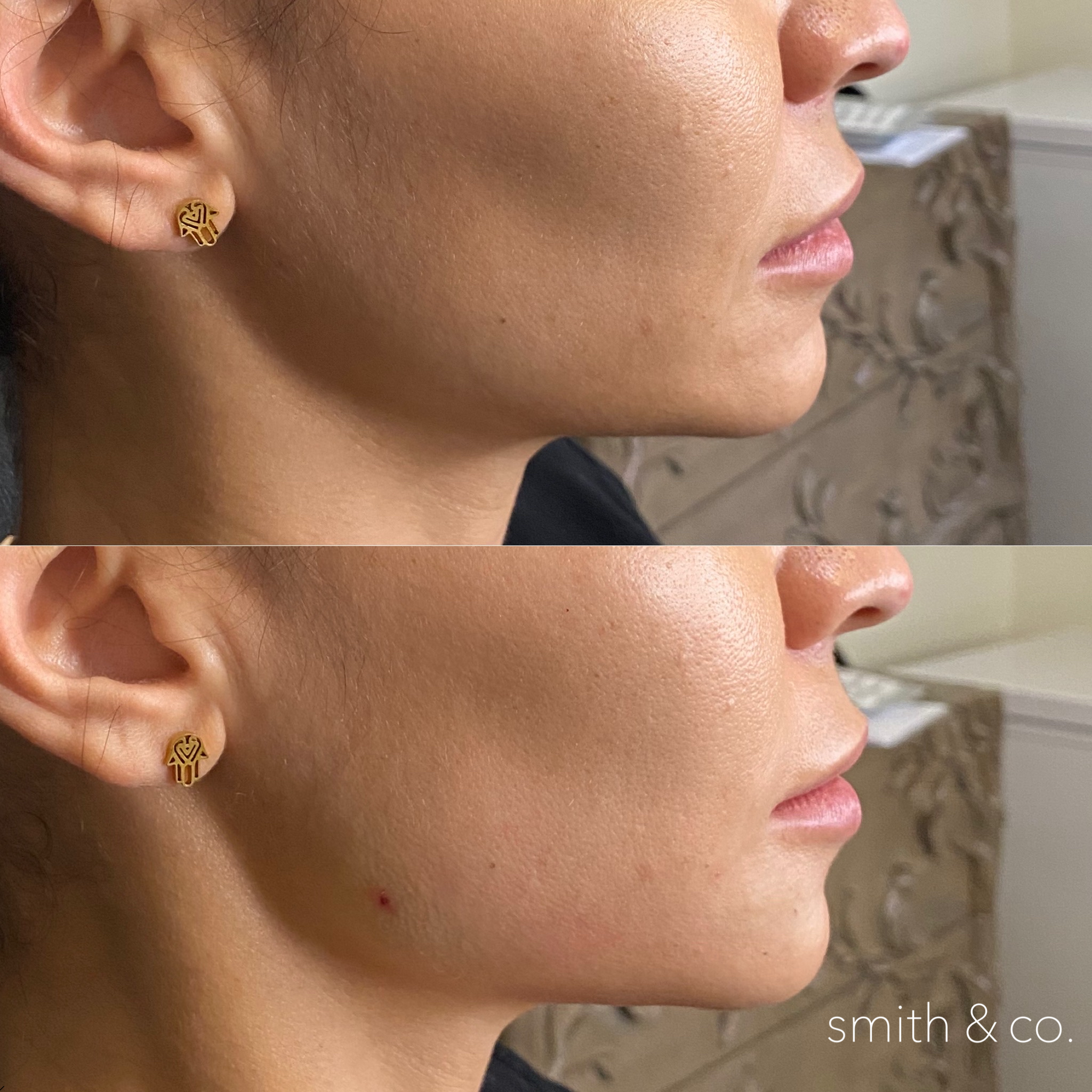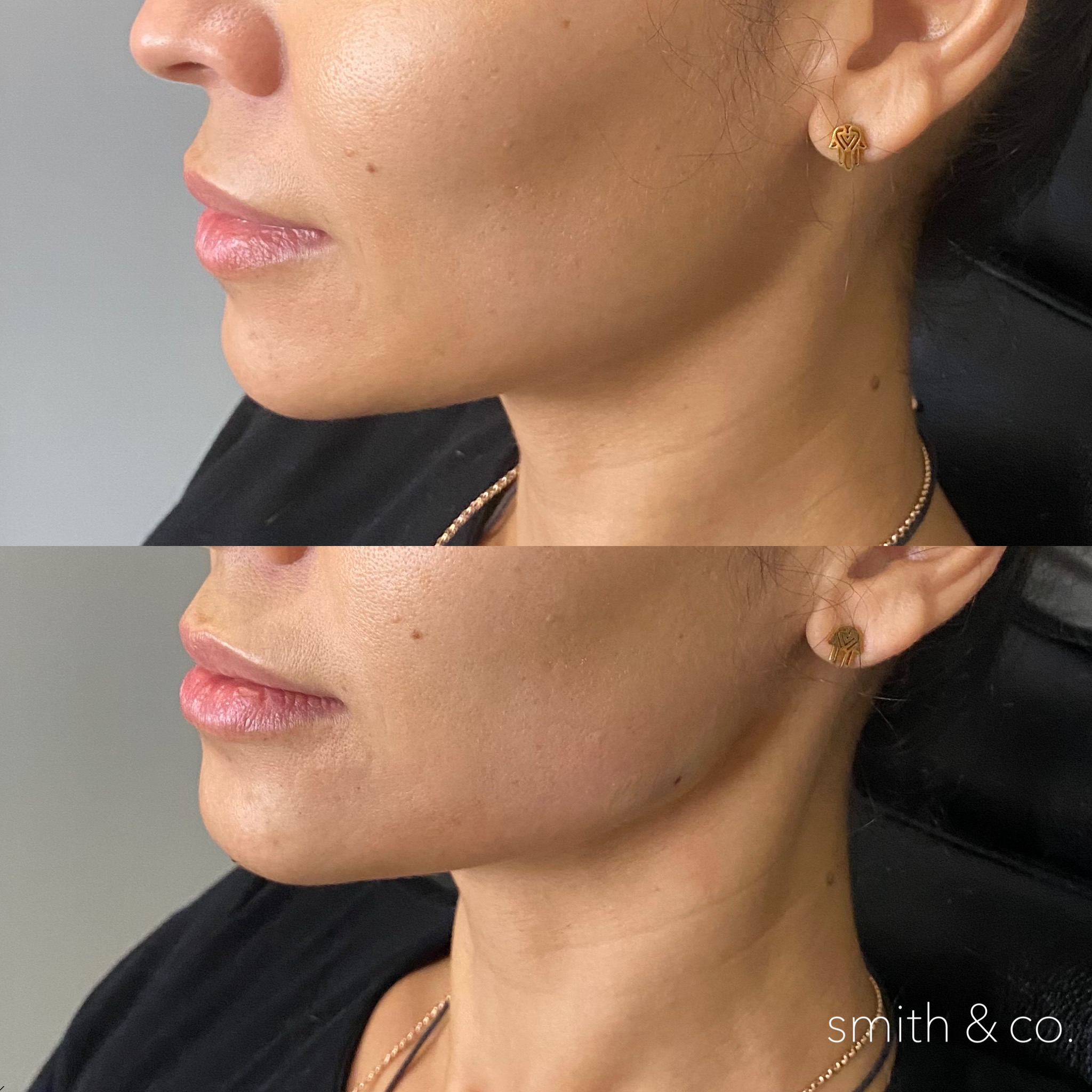PDO thread lift
A PDO thread lift is designed to subtly lift the facial features to reduce fine lines and wrinkles while encouraging collagen production for more volume in the treated areas. PDO threads come in a variety of textures for customized treatments.
Thread lifts have become a minimally invasive alternative to the facelift for patients who are not ready to undergo more aggressive treatment options. Although the effects from a thread lift will be temporary and not as dramatic as a facelift, improvement in the appearance of fine lines and wrinkles can be seen gradually as the procedure stimulates natural collagen production.
PDO sutures are a type of material used for thread lifts. PDO, which stands for polydioxanone, is an absorbable polymer that is flexible and durable for minimally invasive thread lifts. PDO sutures have three main textures: mono, cog, and screw threads. Mono threads are singular, smooth sutures anchored to the face that provides a slight lift. Cog threads have a barbed texture that provides better lift and increased collagen production. Screw threads have 1-2 intertwined threads, giving volume to the treated area. Mono threads may be sufficient for patients who only desire skin tightening and rejuvenation. Patients who desire more lifting and volume will better benefit from textured cogs or screw threads.
Before treatment, the patient's skin will be marked for insertion and the direction of the inserted threads. Once marked, the insertion points will be thoroughly anesthetized. Multiple threads can be inserted through the same point in the skin. PDO threads are attached to a long cannula. The cannula will be pushed through the tissue beneath the skin. When the thread has reached its predetermined endpoint, it will be released and the cannula removed. This process will be repeated until the desired lift has been achieved, with as many 1-15 threads inserted depending on the treatment area and concern being addressed. Any extra thread will be trimmed. The threads will be massaged to ensure the tissue is smooth and no dimpling is present.
Recovery is minimal after a PDO thread lift procedure. Most patients are able to resume normal activity within 1 week postoperatively.
The goal of a PDO thread lift is to reposition facial and neck tissues to restore and rejuvenate the youthful proportions and appearances of the face.
“PDO threads are one of my favorite procedures - It still blows my mind that someone can walk in and walk out with essentially a mini facelift with virtually no visible downtime. ”
Areas of Concerns
Jowls
Marionette lines
Nasolabial folds
Jawline contour
Neck lifting
What to expect?
A PDO thread lift is designed to lift the face and reduce fine lines and wrinkles while encouraging collagen production. PDO threads come in a variety of textures for customized treatments.
Before treatment
Avoid blood thinning medications or supplements
Prep with arnica tablets 1 day before
Avoid alcohol prior to the procedure
During the treatment
The area will be cleaned and prepped.
Local anesthesia will be used.
Needles are inserted to make the entry point.
Threads are inserted through a blunt cannula (a long needle that is not sharp)
Barbs along the thread act as cogs to grasp, lift and anchor the skin
The cannula is withdrawn, skin is repositioned over the thread, and barbs are engaged.
The excess thread is cut.
You will experience pressure and pulling, but it will not be painful, but it will be uncomfortable.
Immediately after the treatment
1-3 hours, you will be numb, certain areas will move funny and look lopsided
Take Advil or Ibuprofen around 1-2hrs after the procedure to help with soreness as the numbing wears off
Continue to take this around the clock as needed for 2-3 days
You will feel soreness
Certain areas will hurt worse than others
It will hurt to touch the area
You will not be able to open your mouth wide or make big expressions
The RULES
Do not put makeup or creams over the holes; you may wash your face or clean the area with alcohol after 12 hours
Limit big facial motions for at least 24hrs
Sleep on your back for at least 3 days
*No oral sex, no cheeseburgers, and no dentist for at least 2 weeks
No facials or laying face down in a massage table hole for 2-3 weeks
No facial procedures (PRP, lasers, peels, Microneedling etc.) for 2 weeks
No jumping or jarring motions for at least 1 week
Non-strenuous activities can be resumed the following day
Eat soft foods and liquids for 7 to 10 days
Resume normal activities as tolerated
** Respect the pain & resistance** if you do something and it hurts - stop doing it
“Recovery Notes
Recovery after a PDO thread lift is minimal. Most patients are able to return to work and most normal activity 1 day after the procedure with only minor discomfort. It is common for patients to experience minor inflammation and bruising which typically resolves within 1 week.
”
Results
Improvement noticeable immediately
Results improve over time as collagen production builds
Re-enforcement is recommended at 6-8 months.
Maintenance every 18 months after that
Not Recommended For
A PDO thread lift procedure is not recommended for patients with more severe signs of aging or loose facial skin who would better benefit from a more invasive facelift procedure.
Ideal Candidate
The ideal candidate for a PDO thread lift is experiencing early signs of aging, such as mild wrinkling and sagging skin. Candidates desire a minimally invasive procedure with little downtime.
Side Effects
The results are incredible, but the technology is not perfect. I am going under the tissue and anchoring the thread in hypermobile areas on feel alone. With this comes some potential downsides.
You can experience rippling, dimpling, and puckering; sometimes, you can feel the thread. These side effects are more common when there is more tissue laxity and the area is highly mobile (like around the mouth) - this is also one of the most effective lifting vectors, which is why we still do it here despite the potential downside. If you experience any of these issues - know that they will self-resolve within 6 weeks. If it is something that really bothers you, I can address it. It requires me to make a tiny incision (which could potentially leave a blemish or a scar) and go in to release the thread or cut the tail. In these cases, instant relief is experienced, but you will go through some degree of soreness again after the correction.
In every case of these side effects, the patient still told me that the results were well worth it and that they would do it again. The side effects were not enough to deter them from the procedure. In most cases, patients have opted to leave them to self-resolve, but in the cases where I went back in, they felt immediate relief and were very happy.
